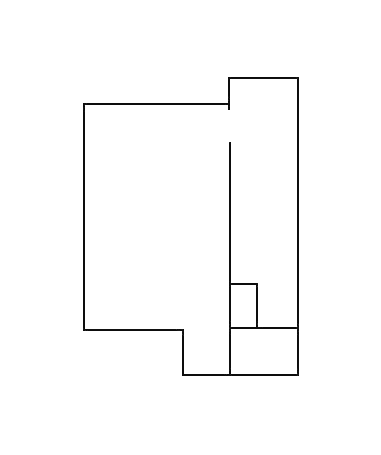New Lives for Broken Things
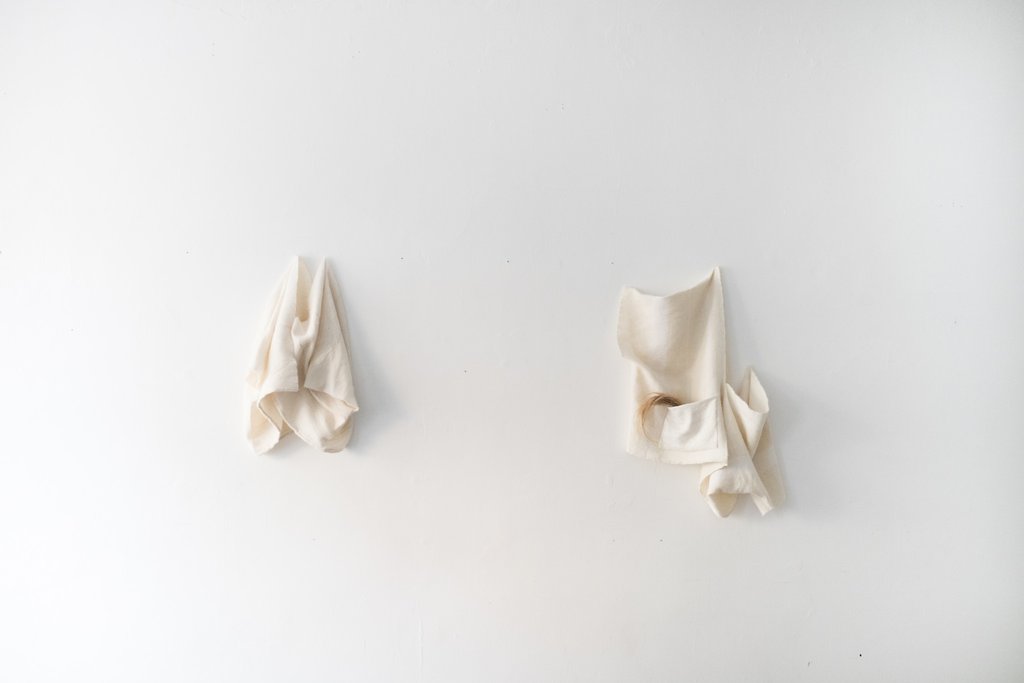
Brittany Walston interviews Melina Bishop | Photographs by Brittany Walston
When you come into the studio you might find Melina Bishop in her white work shirt, experiments on the ground, hands messy. Or she may be hunched over her desk with headphones in, working on a seemingly endless embroidery. Sometimes she’s simply writing, or rearranging the objects on her desk; museum postcards, scissors, books, her pencil sharpener next to a row of pencils—an army of tiny things laid out in the corner by the window.
Many of our conversations are had as we each sit in our studio chairs, turned around so we face each other. It was probably here that she first mentioned a residency in Iceland. (Then a far distant possibility.) At the time I probably said something like, “That sounds cool,” as the conversation moved to something else. But looking back, Iceland is a particular choice for someone like Melina. To say that she’s social would be a bit of an understatement, she’s the kind of woman whose presence radiates in a large group, intensifies in a small one. Either way, she feels like the sun. Going to Iceland didn’t mean total isolation, but it did mean leaving behind a community of artists and friends. Isolation from the familiar. Learning to be the sun for oneself.
This deliberate choice has made itself evident in this new body of work, Soft Logics. Weavings are connected with thin threads to panels, broken orbs are laid out and filled with sand, fabric is pieced together to form the vague shape of a garment, stains are covered with fresh clean embroidery. Everywhere, in each of these pieces, there is a sense of taking broken things and making them new. Not fixing them, or idolizing what they were, but using the broken pieces to construct a new object altogether.
Walking around the show, I made a hasty mind map. The word human branches out and connects to forms, clothing, skin, body. Loose threads connects to patchwork, which connects to covered, cleaned, corrected, connection, attempted, which reaches out to longing. Another note scratched down on the next page simply reads: Outgrowing shells and abandoning them.
It’s this thought I most see in Soft Logics, although perhaps “relinquish” would be a better word. For it’s not abandoning past shells, or past selves, but letting them go and moving forward. Growing another shell out of the same material, creating something new out of the fodder.
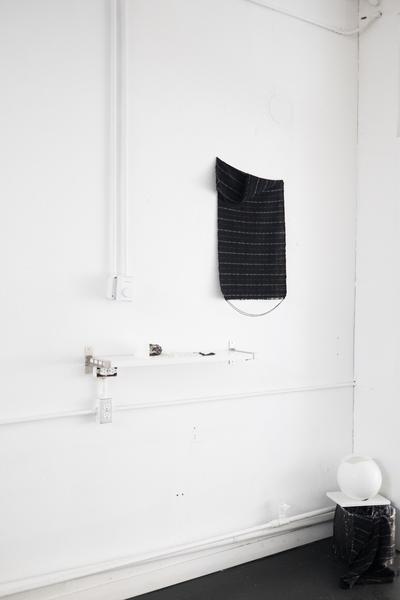
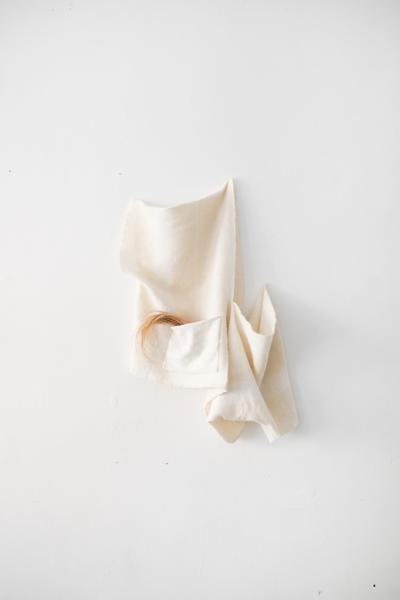
How do you enter your studio space each day? What’s the first thing you do when you arrive?
I like to get to my studio in the morning, when the light of day is still fresh and I am well rested (by the time that twilight hits, requiring the over-head lights to be turned on, I am usually mentally spent and ready to go home.) Commonly I arrive with too much stuff in my arms, an iced latte in one hand and a bagel in the other. I use my breakfast as an introduction to the day; a time to look around at what’s happening in the space and evaluate what task should take priority. It’s also a good time to look at notes or read through relevant research. Soft Logics, like most of my bodies of work, was directly informed by a specific essay. Language has always been an essential part of my creative process so naturally reading and writing make good catalysts for a productive day of making.
It is also hard for me to start a day in the studio without rearranging something, usually just the items on my desk but sometimes furniture pieces or the works on the wall. I am the sort of person that is incredibly sensitive to my environment and the state of my space directly impacts my state of mind. If my desk is cluttered or the floor is covered in the refuse from whatever I’ve been working on, it’s hard for me to focus on the task at hand. Cleaning, organizing and intentionally arranging things are therapeutic processes for me.
Talk to me about how being in Iceland shaped this body of work. Did anything unexpected come out of your time there?
This body of work is irrevocably tied to my experience in Iceland in so many different ways. One of the main reasons I chose the residency at the Icelandic Textile Center over any other residency that I could have applied for is that I really wanted to push deeper into my relationship with weaving. Having access to the 200-year-old Swedish countermarch looms was, of course, essential. But also being tucked away in a rather remote place with very little else to do was really conducive to this specific process because weaving is remarkably time-consuming, requiring dedication and concentration.
On a practical level most of the materials used in this body of work are Icelandic in origin. I worked with a lot of Icelandic wool in my weaving, as it is an essential part of Icelandic culture and is very readily available. Everything in Iceland is expensive except for incredibly high-quality wool. I also incorporated elements from the environment that I couldn’t have found elsewhere. On a conceptual note, extracting myself from my life and placing myself in the far-off and unfamiliar lead to a lot of self-evaluation. I think re-contextualizing yourself for periods of time can help you better understand who you are and your place in the trajectory of your own narrative. These themes became evident in the work.
Our mutual love of broken things is something that interests me. I find myself taking broken things and making sense of their brokenness, but your work seems to do the completely opposite: mining what’s broken as new material. What are your thoughts?
I also appreciate that we share a love of broken things but for such remarkably dissimilar reasons. It’s a reminder to me of what we have in common but also how differently two artists can approach the same object or concept. I like to view broken things through the lens of their potential, as if they have had a past-life but they are asking for reincarnation. I think often “brokenness” is associated with an objects inability to serve its original purpose, or at lease serve it less effectively. I like to look at such things and ask what they can do. I think this interest also relates to the over-arching conceptual theme of Soft-Logics, which is flexibility and open-mindedness of thought. This applies to all broken things— objects, people, experiences. It is easy to focus on what you perceive something “should” be, what some object should be capable of, what being in a certain place at a certain time “should” feel like. It is harder, at times, to ask what is there, what this experience does feel like and be open to the possibility that there can be multiple, often contradictory answers.
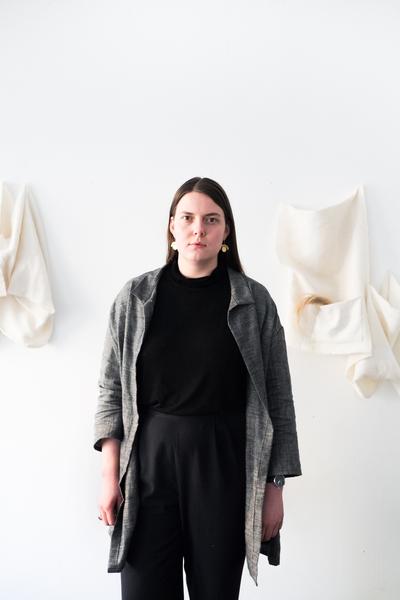
How do you interact with your materials? Can you talk about the relationship between found, natural, and created materials?
My endless and undeniable love of material exploration is at the very heart of why I am an artist and not a journalist or a therapist or something else more stable and lucrative. I have always been an extremely tactile person, as all those I come into contact with can attest to. I love speaking in haptic language and trying to translate sensation through texture and a material’s specific qualities. In my work I strive to maintain a relatively balanced relationship between found, natural and created material. I generate material because I am a craftsperson who takes joy and pride in such processes. It is important to me to weave and knit and embroider, devoting much time and energy to historically significant textile processes.
It is equally significant for me to look at the world around me through that lens of potential that I spoke about earlier, asking what is already here around us, often over-looked. I think that when we travel to unfamiliar places a layer of foreignness is spread on objects of the everyday, like rocks and sand or spoons and books. They are elements that we are accustomed to seeing but because of their slight differences they come into sharper focus. In this show, which was very much imbued with the narrative of my experience in Iceland, it was important for me to incorporate all these disparate pieces of the story. Much of Iceland is still very wild and untouched, vast areas defined only by only landscape and animal life therefore including natural elements like horse hair, sand, volcanic stone and fish leather felt essential.
This work seems to represent an intense period of self-reflection. Do you see any different themes emerging in the work you’re making now? Or maybe more specific threads that you’re following from Soft Logics?
I think when leaving Iceland one of the things I was most looking forward to was reengaging with and growing my community in Portland. I am a very relational person and while I did form some very important relationships with fellow residents, much of my time in Iceland was introspective and independent. It was healthy for me, no doubt. Nevertheless as I move forward I am looking for more connection in my practice through dialogues and collaborations. Also in the same essay that the term “soft logics” is derived from, Pennina Barnett speaks to the reciprocal nature of tactile experiences, using the line “to touch is always to be touched” which I am using as a conceptual backbone for a smaller body of work comprised mostly of abstract ceramic forms, displayed in relationship to one another. This too, in a symbolic way, will seek to speak to the communal rather than the singular.
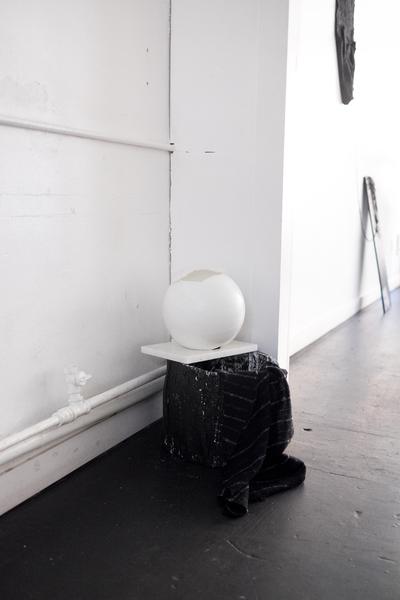
www.melinabishop.com
www.brittanyvwalston.com
Back to Articles
